An Exclusive Look at the OAK Collection, One of the World’s Finest Assortments of Watches

Several hundred watches, collected over 35-plus years, at a cost of hundreds of millions of dollars, curated down to 160. . .The numbers alone are enough to make The OAK Collection—which is about to open at The Design Museum in London ahead of its bow in New York this Fall—a must-visit for any horolophile, anywhere.
What makes the collection even more compelling, though, is the three-tiered approach to acquisition adhered to doggedly by its owner, French businessman Patrick Getreide. Firstly, the watches must be not just rare, but “one of a kind”—the phrase from which the OAK Collection takes its acronymic name. Special commissions, one-offs and prototypes all play their role in a collection that has involved, for Getreide, lengthy sagas of arduous pursuit as well as flea-market flashes of serendipity.
More from Robb Report
Patek Philippe Just Opened Its Second US Boutique in Miami's Design District
Meet 'El Limoncito,' a Rare Rolex Paul Newman Daytona That Could Fetch up to $1.2 Million at Auction
Secondly, the watches must be flawless, and as functional as the day they left their manufacture (a full-time watchmaker is even employed to maintain them). Getreide has frequently eschewed damaged pieces over the years (including a “Victory Watch” commissioned for his hero Sir Winston Churchill) and is unmoved by watches that have been restored or excessively polished back to “newness.” “Many collectors like damaged watches—as if it means they’re more alive,” he says, with a “not-for-me” shake of the head.

OAK Collection
Finally, his emphasis is on classical, timeless aesthetics. Indifferent to the sci-fi avant-gardism found in the quieter rooms at the annual watch fairs, Getreide has built up a collection largely made up of Patek Philippe and Rolex pieces, although he does have a soft spot for Cartier, Vacheron Constantin, F.P. Journe and other independents.
Rarity, flawlessness and elegance, then, are his holy triumvirate. He’s also a firm believer that watches must be used for their purpose (he insists that he wears all his pieces), is impervious to the tastes of others (he’ll speak passionately, for hours, about the beauty of the unloved new Rolex Air-King) and—ironically, given the astronomical value of his collection—is indifferent to how much they are worth, as he intends never to sell any of his pieces (“I’m just not motivated by prices,” he says. “C’est la vie.”)
“I will never bend my principles in order to acquire a piece,” is one of his parting comments to Robb Report, at the end of a very happy day spent with Getreide in Geneva where the watches are housed in the lead up to a global tour beginning in London.
Here are our painstakingly selected highlights from the exhibition—including, as a treat, a trio of watches that, astoundingly, didn’t make the final cut.
Patek Philippe Ref. 2523J World Time
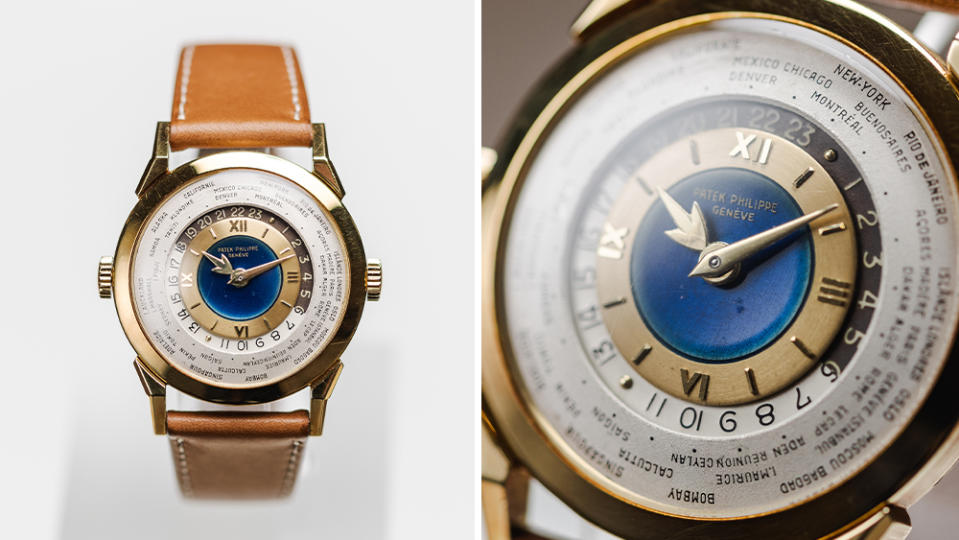
If pushed, a little more than gently, Getreide will assert this to be “The watch I like the most—very rare, very much in demand.” Only two other examples in 18K yellow gold were ever made, and this one—being new old stock, and virtually unworn for 60 of the 80 years it has existed—is in pristine condition.
Its World Time complication goes back to the early 1930s, and the creation of a miniaturized system for telling the time in various time zones by watchmaker Louis Cottier: a concept that would have been heavy with exotic romance in the days before the democratization of air travel.
The faceted lugs and two crowns combine to elegantly imperious effect, but stealing the show is the blue enamel center, as vibrant today as it was in 1953, creating the impression of a translucent, azure sea surrounded by the place names etched onto the outer silver ring.
Patek Philippe Calatrava Ref. 5196P
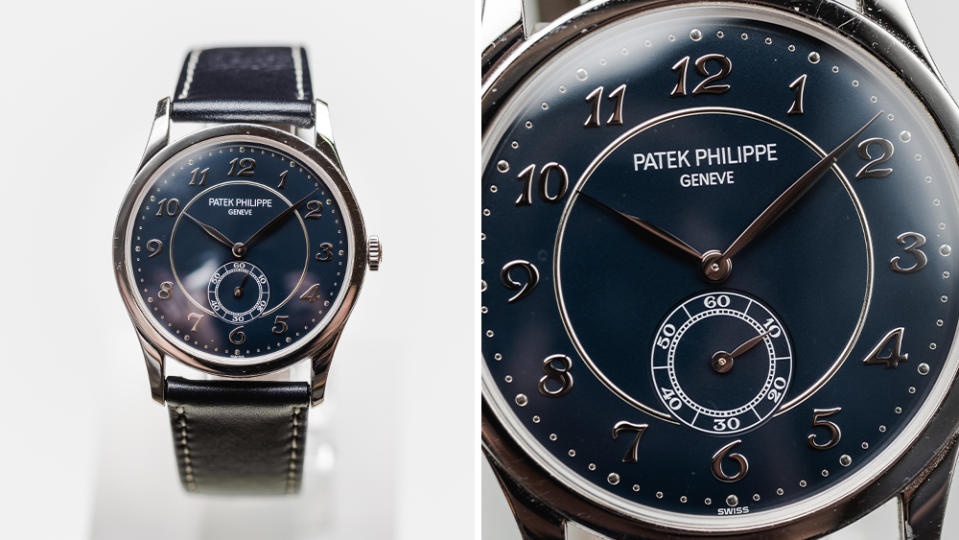
Partly because he never buys with a view to selling on, and partly because of his fixation with his watches being flawless, Getreide is as fond of modern pieces as he is vintage ones. “People think I’m crazy to collect new ones—that modern watches are not any kind of investment—but that’s not for me,” as he puts it today.
Which is why his comprehensive selection of Calatrava models spans from the early 1930s right up to the 21st century and is, as Patek Philippe president Thierry Stern has noted, the finest privately held Calatrava collection in the world. This 37mm, manual winding, time-only piece—water-resistant, in diamond-set platinum—was specially made for Getreide in 2016, and is made unique by its midnight blue dial, which contrasts with the Breguet numerals inspired by Refs. 530 and 570.
Rolex Cosmograph Daytona Paul Newman
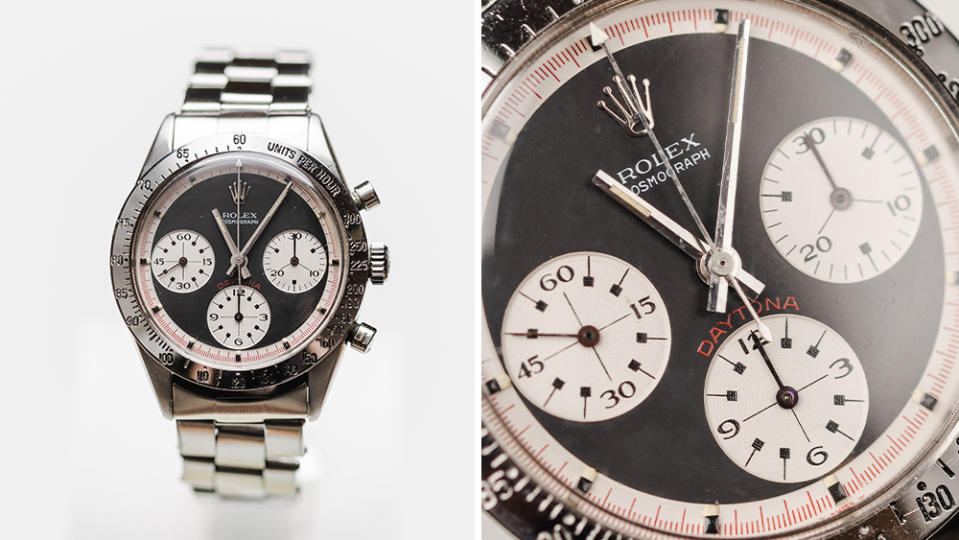
“I had to fight very hard to get this one,” Getreide laughs, referring to a water-resistant, manual winding, stainless steel chronograph with black dial and steel bracelet—one with a back story that more than merits its place in the OAK Collection. It was once owned by NASA astronaut “Walt” Cunningham, who took it up into space with him in the lunar module Apollo 7, on the first successful manned mission of the Apollo program in the late ’60s.
Featuring one of the earliest serial numbers found on a Paul Newman, the 36.5mm watch’s black dial, luminous markers, red outer-minute track and Cosmograph and Daytona designations appear as fresh as when they were printed over five decades ago. So much for space’s atomic oxygen eroding surfaces…
Patek Philippe Ref. 3970ER
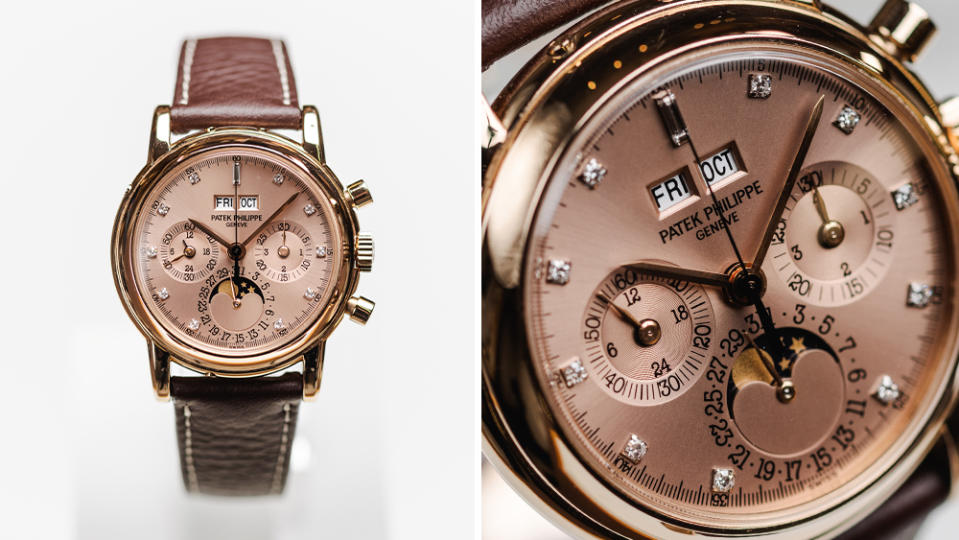
Patek collectors of the highly clued-up variety—not an especially rare breed in horological circles—hanker after “pink on pink” (aka “Monochrome pink”) pieces by the manufacture, as they’ve traditionally been made in very limited numbers.
This one, unsurprisingly, is entirely unique: a special order, 36mm, water-resistant 18K pink gold perpetual calendar chronograph, made especially for Getreide in 2015, with a diamond-set pink dial, moon phases and leap year indication.
Patek Philippe Ref. 2482
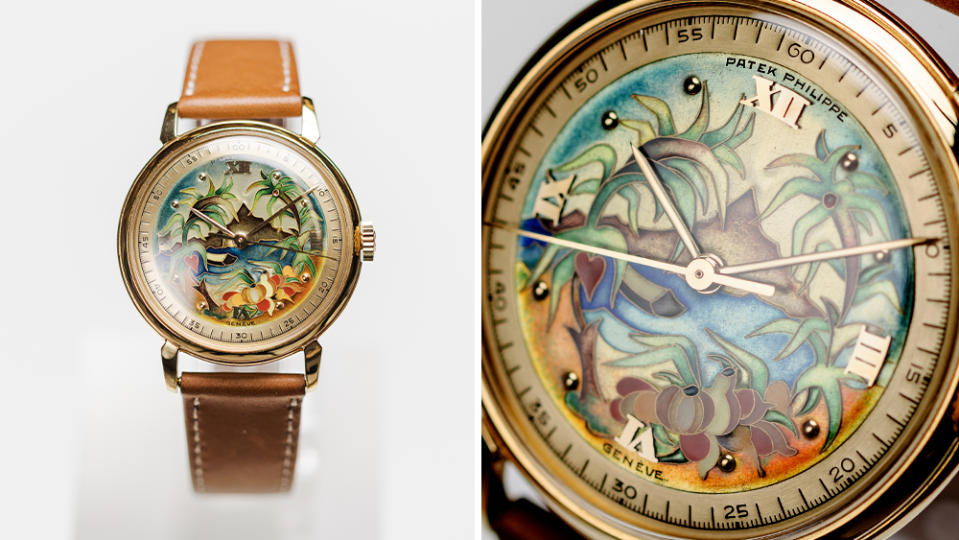
Yellow gold, 35.8mm in diameter, sweep center seconds… So far, so normal for the much sought-after line launched in 1950. The tropical landscape depicted in cloisonne enamel on the dial, though, ensures that this piece qualifies for Getreide’s “One Of The Kind” stipulation with flamboyant elan.
It is one of two Patek pieces featuring elaborately decorated enameled dials owned by Getreide (the other is Ref. 2481, depicting a lighthouse): and the fact that they were unpopular with many dedicated traditionalists amongst Patek’s fanbase is, says a collector who is proudly impervious to the tide of popular opinion, part of their charm. “The color is so precise,” he marvels.
F.P. Journe Octa Calendrier
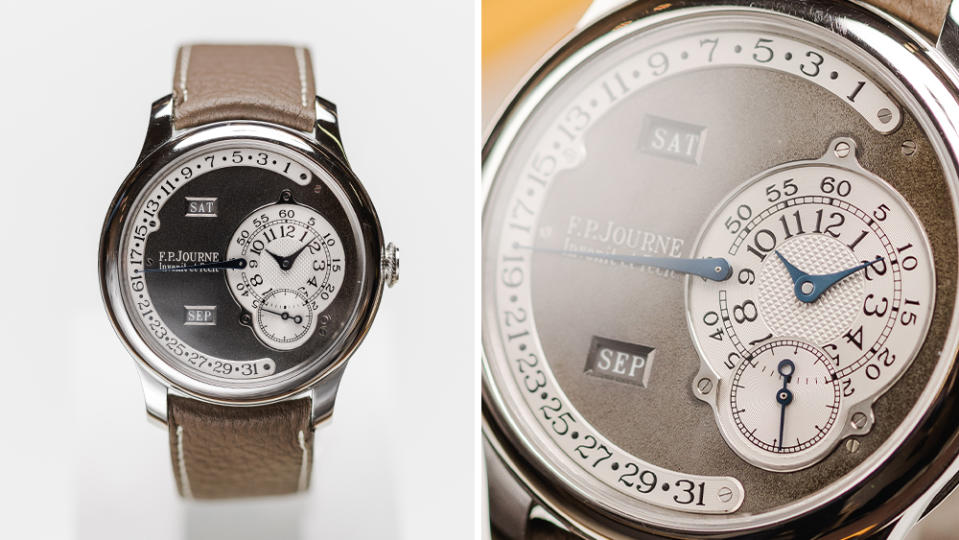
At one point during our time spent with Getreide, he reveals that his associates at Patek Philippe harbor particularly strong professional respect for the work of two other makers: their former apprentice Rexhep Rexhepi, and one of that maker’s major sources of inspiration, François-Paul Journe.
The piece here, from a circa 2002 limited edition series, is a prime example of why: The integration of a third complication, an annual retrograde calendar, into the existing Octo caliber was a horological achievement that more than justifies the Patek intelligentsia’s reverence for a maker born in Marseille in 1957.
Serious collectors are particularly drawn to the rarity and aesthetic kudos of the ruthenium-coated components on display here.
Patek Philippe Ref. 1579A
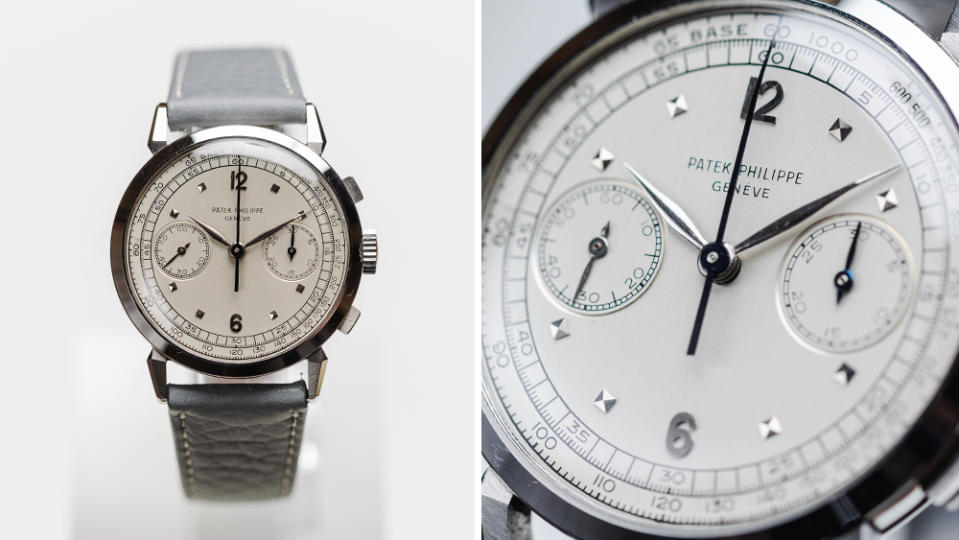
At 36mm, this chronograph with tachometer scale from around 1950 is among the largest Patek models of its era. What is more unusual about it, though, is it was made predominantly in 18K yellow gold and 18K pink gold, with a few examples manufactured in stainless steel—but barely any in platinum.
This piece was one of six and is likely the only post-WWIl chronograph to have survived in such incredible condition. Another watch in the collection, Ref. 1579P, is one of three made around four years previously. Getreide’s is the only one with the long signature (“PATEK, PHILIPPE & Co / GENÈVE”—note the comma and accent on the “e”) that has not been lost to oxidization and restoration.
Voutilainen GMT-6
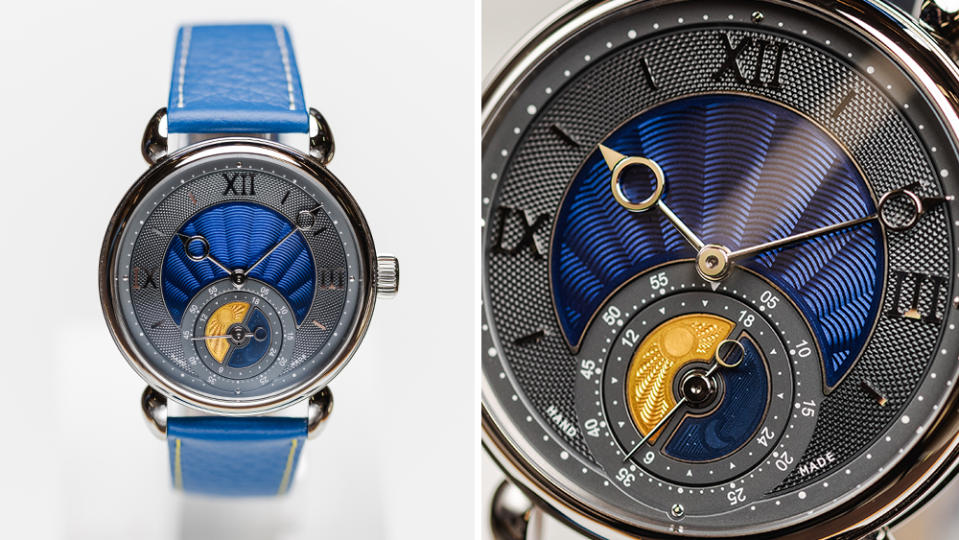
Finnish-born, Switzerland-based watchmaker Kari Voutilainen, whose independent business was founded in 2002, is renowned for introducing the world’s first decimal repeater sounding hours, ten-minute intervals and then minutes.
This manual-winding, stainless-steel and enamel wristwatch with double escape wheel, direct impulse, night and day indication and second time zone is a techie geek’s delight: witness its accuracy-enhancing proprietary sprung-balance system, four daily rate-tweaking gold inertia-blocks and energy-saving double-wheeled escapement.
With its guilloché/enameled silver, blue and yellow hand-made dial and white-gold Breguet-style hands, the 39mm unique piece is more than a little pleasing on the eye, too.
Patek Philippe Ref. 5089G
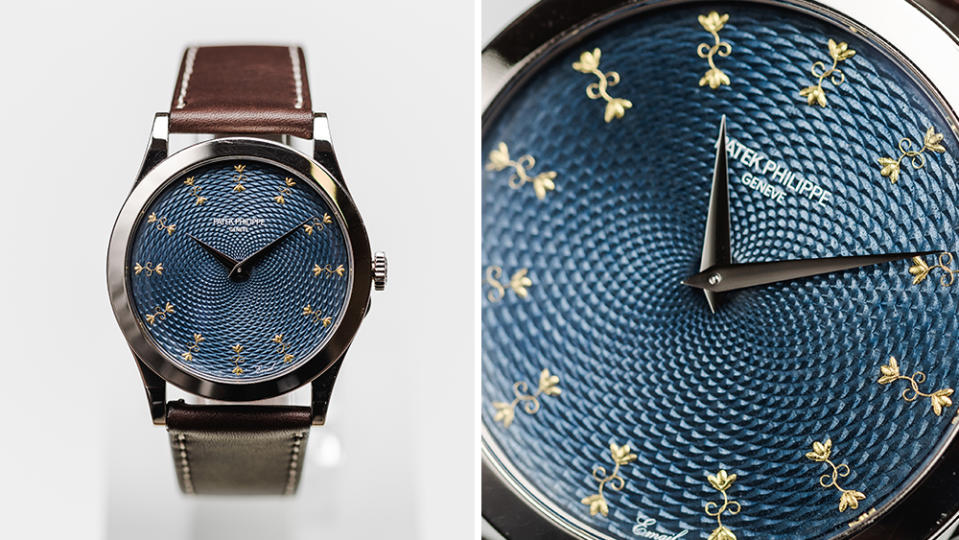
No photograph can properly capture the twinkling majesty that takes place on the dial when it catches the light, thanks to a swirling geometric pattern involving hand-guilloché work beneath a flinqué blue enamel coating, in this Calatrava from the Rare Handcraft Collection of 2017.
A limited edition 37mm piece in white gold, it takes its name—”The Flowers of Time”—from the flower-shaped gold paillons, fashioned from 72, hand-set, tiny yellow-gold spangles that make up its indices.
Patek Philippe Ref. 530A
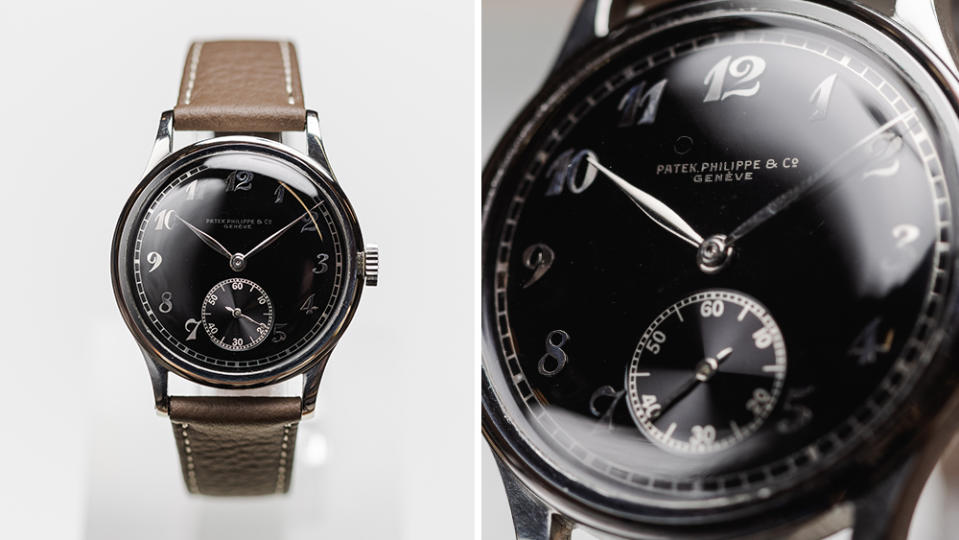
Produced from 1937 to 1944, the 530 was a fairly niche purchase at the time due to its unusually generous diameter (36.5mm). Hence, production was limited to gold, pink gold and stainless steel. This is the only example known in stainless steel with a black gloss dial, steel Breguet numerals and gold Feuille hands.
Rarer than a Grande Complication, especially in this condition, it’s a watch that any Calatrava collector is likely to deem the most exceptional in the collection, particularly in terms of its place in the Patek product family tree.
Patek Philippe Ref. 1518R
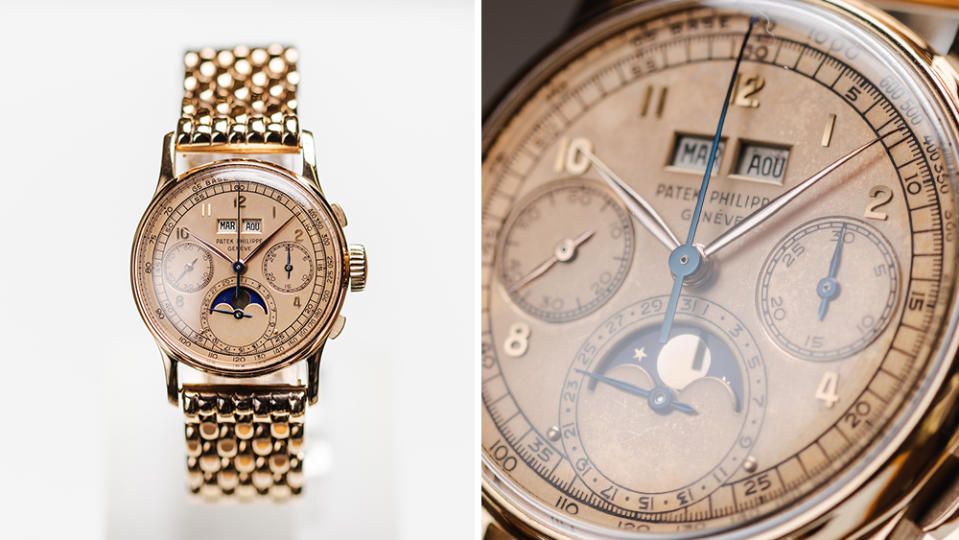
In the middle of World War II, in the sleepy town of Basel on the northern fringes of famously neutral Switzerland, Patek Philippe introduced the first-ever serially produced perpetual calendar chronograph wristwatch with moon phases. Over the subsequent 14 years, only 281 pieces were ever made.
This 35mm piece from 1948 is one of just 12 made in 18K pink gold, and still has its original Gay Frères pink gold bracelet; again it’s thought highly unlikely another in such mint condition exists.
As with many of the pieces here, Getreide has replaced the strap/bracelet following careful consultation with Patek.
Patek Philippe Ref. 2499J
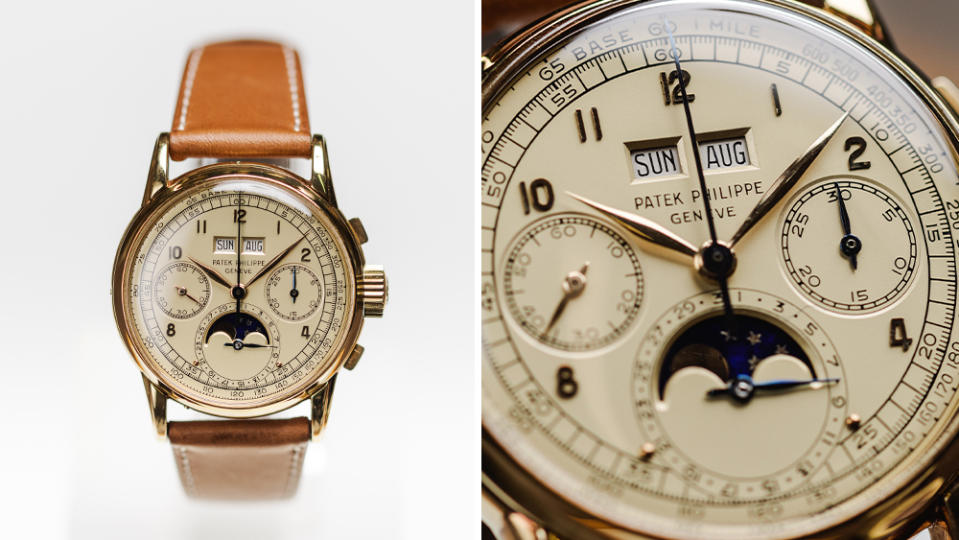
Patek’s successor to Ref. 1518 was introduced in 1951 and incorporated a case design more in keeping with the industrial aesthetics of that decade.
This 36.2mm piece, released the year after, is one of 10 surviving in yellow gold with cases made by Emile Vichet—Patek’s Geneva-based, go-to specialist in the post-war period—and the only one in the world whose chronograph, perpetual calendar and moon phases functions sit atop a champagne-colored dial.
Rolex Chronograph Ref. 3525
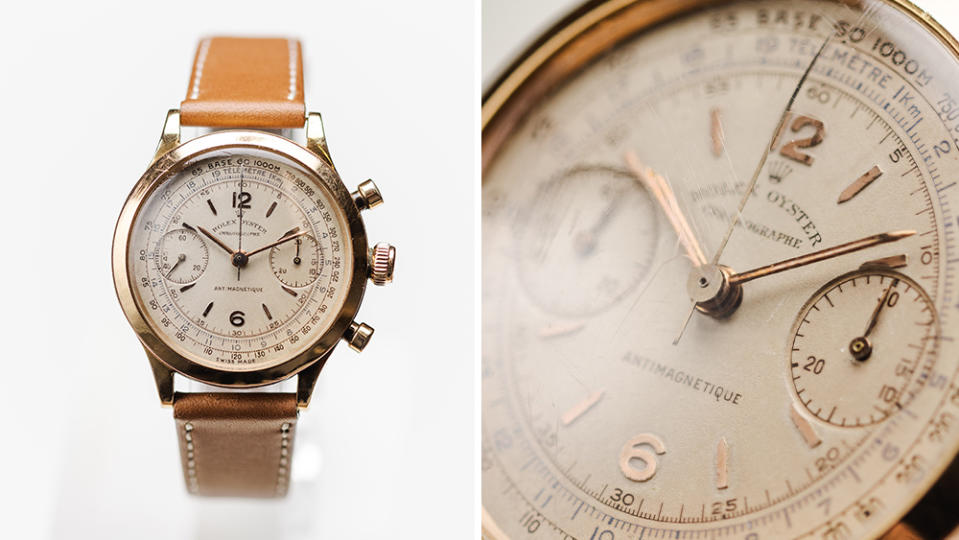
Rolex launched this reference in 1939, when WWII broke out, and ceased production shortly after it ended. The 18K Gold “Monoblocco” Rolex seen here, though, is symbolic not of conflict, but of an incident that may well have prevented a second Italian Civil War.
In July 1948, leader of the Communist Party Palmiro Togliatti, one of the founders of post-fascist Italy, was shot three times by a young Sicilian would-be assassin. Togliatti survived and, two-and-a-half weeks later, gave one of the leading surgeons in the team that saved him (and probably averted huge social unrest ) Doctor Paolo Biocco this, an antimagnetic, water-resistant, manually wound gold chronograph.
The piece’s multiple-scale dial is in exceptional condition for its age.
Patek Philippe Ref. 5208
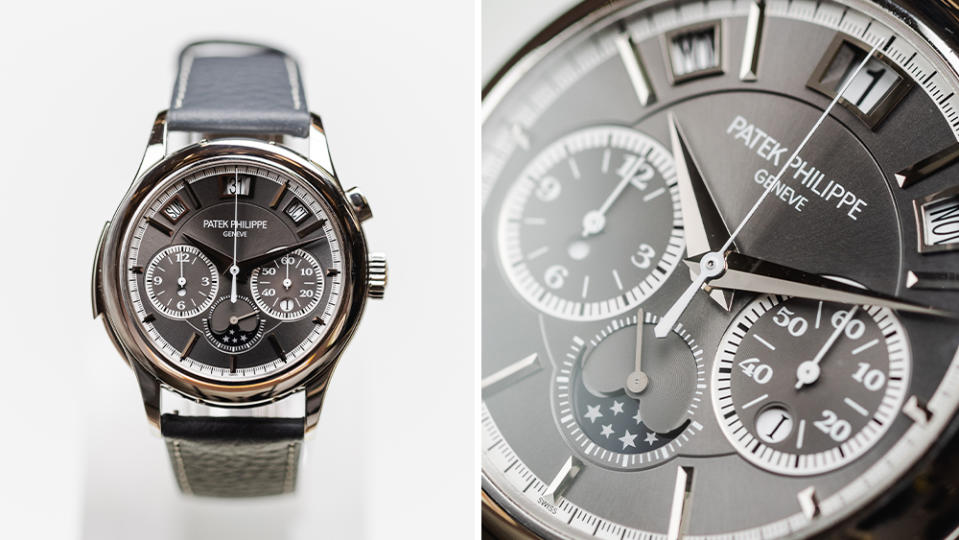
If anyone was doubting Patek’s mastery of supercomplicated pieces before 2011, they were silenced when the manufacture introduced its first triple complication wristwatch to integrate a chronograph. This 42mm iteration packs a minute repeater, instantaneous perpetual calendar, mono-pusher chronograph, moon phases, leap year indication and night and day display.
It’s rare that Getreide mentions any misgivings about his beloved pieces, but the chimes of the minute repeater are too quiet for him. “They say you can hear the new one at 50 meters,” he says, referring to the Diamond Minute Repeater and Perpetual Calendar announced at Watches & Wonders in March: a piece whose sounding mechanism Patek refers to as “cathedral” gongs.
Patek Philippe Henry Graves Jr. Pocket Watch
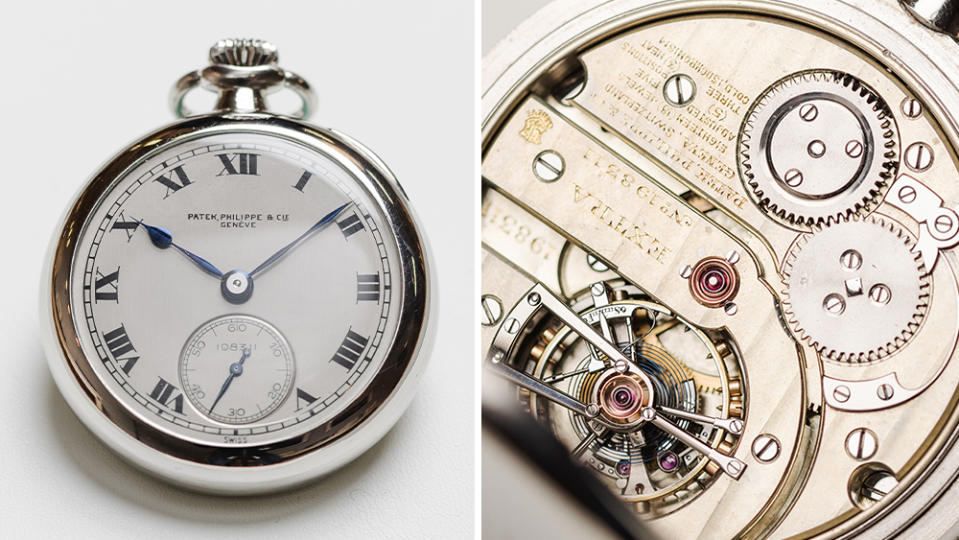
Those who have swotted up on pocket watches over the years may take one glance at the back of this piece, see the engraved family coat-of-arms and motto “Esse Quam Videri” (“Be, rather than to seem”), and be immediately aware of its provenance: it was once in the possession of a man who reportedly helped keep Patek afloat after the Wall Street Crash of 1929—New York banker Henry Graves, Jr.
The Graves name was highlighted in late 2014, when a “Supercomplication” piece commissioned by Graves from Patek in 1933—gold, with 24 functions which took five years to put together—sold for a record $24 million.
Astoundingly, this open-face, platinum tourbillon watch, one of five Graves family pieces Getreide owns has never needed servicing—despite now being almost 100 years old.
Patek Philippe Ref. 3800
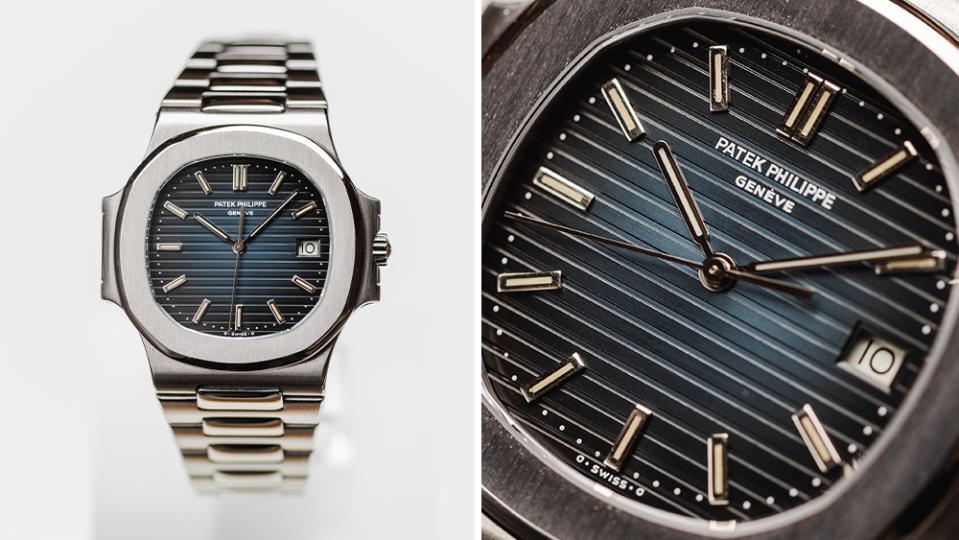
At first glance, this might appear to be a regular mid-size Nautilus, a line Patek Philippe launched in 1981 as an alternative to the existing “Jumbo” version. Its stainless-steel case was manufactured by Favre-Perret, its dials by Stern Créations.
Nothing unusual so far, but that “one of the kind” factor can often be an internal quirk, and collectors will struggle to find another Ref. 3800 with a quartz movement. It was made especially for a doctor, whose line of work was so time-sensitive—measuring pulses for example—he didn’t want a watch that required winding. “It’s actually incredibly difficult to make this watch with quartz,” says Getreide.
Voutilainen Vingt-8
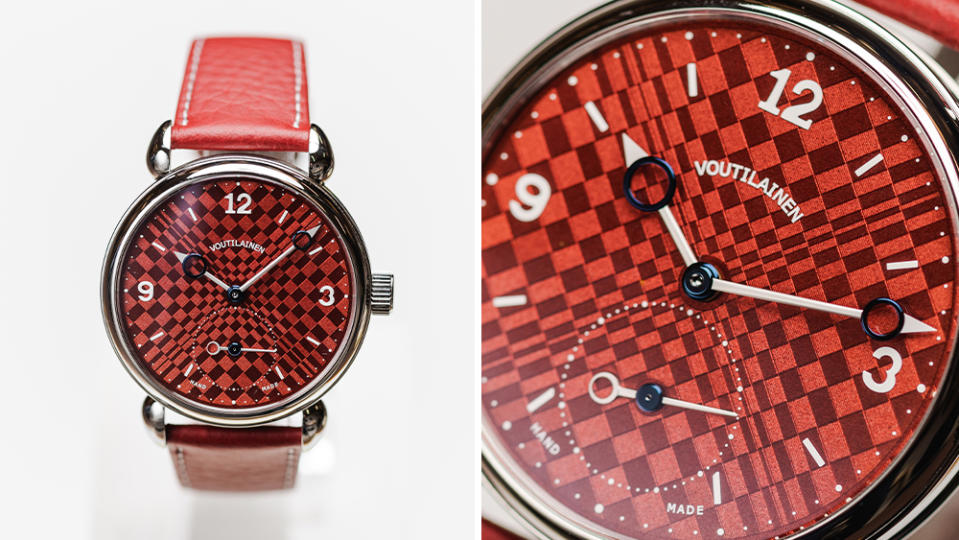
Another piece from the Finnish modern master, this time featuring a special new direct impulse escapement inspired by the “échappements naturels” created by Breguet in 1789. To simplify a beguilingly complex slice of horological mastery, it uses two escape wheels instead of one, synchronized by jeweled impulse rollers, creating a two-directional impulse which improves energy efficiency.
The unique 39.50mm piece’s mesmerizing, red Grand Feu enamel dial is intended to induce an optical illusion.
Three That Got Away…
Patrick Getreide’s collection is so vast that there were always going to be some special pieces that didn’t make the cut. Here, three for your eyes only…
Patek Philippe Chronometro Gondolo
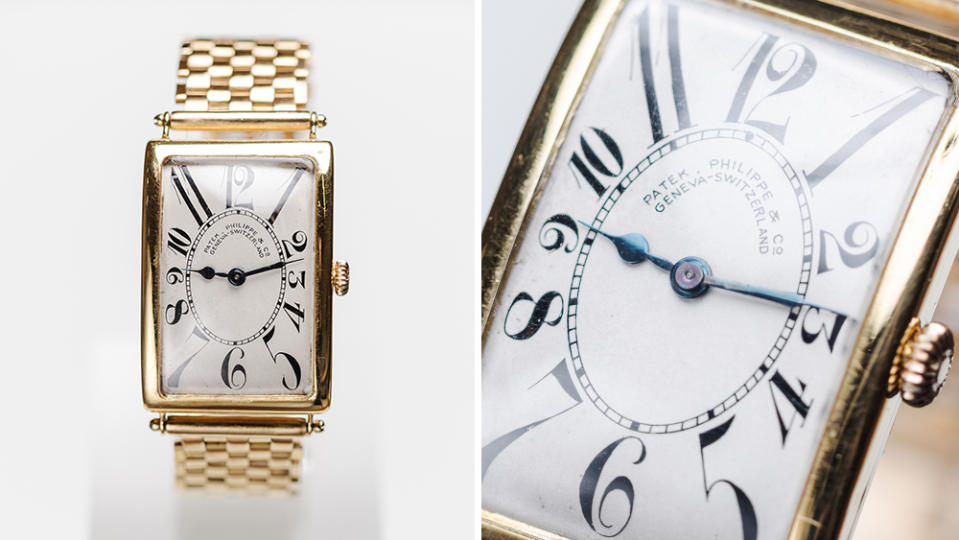
An obscure piece of horological trivia: in early 20th Century Brazil, the name “Patek” was interchangeable with the word “watch.” This is because, with Europe ravaged by war-inflicted austerity, a boutique in the then-booming Rio De Janiero, Gondolo & Labouriau, sold about a third of Patek’s entire production output.
This piece is from a tiny series made during the 1910s and 1920s. Chronometro Gondolo watches were manufactured exclusively for Gondolo & Labouriau, although a few later became available from other global retailers—such as Brinkmann in Naples, as was the case with the watch seen here: a 30 x 43mm piece whose oversized hinged case, curved lines and exploded Arabic numerals will draw gasps from anyone well-versed in Patek’s usual aesthetic.
Rolex Day-Date Oyster Perpetual
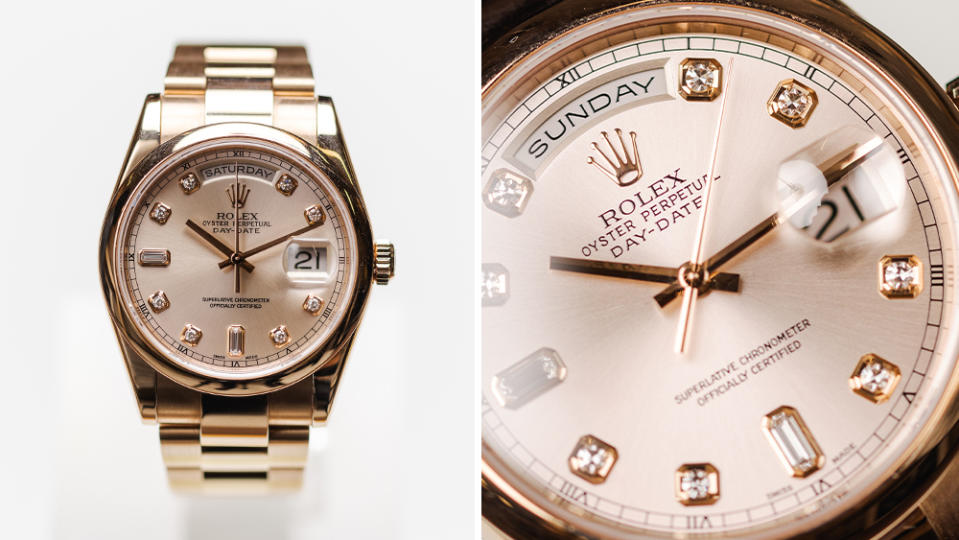
This is one of the rare Day-Date Oyster Perpetuals out there to be cased in pink gold – made even rarer by the fact that it once occupied the wrist of Sir Eric Clapton. A 36mm, Tonneau-shaped gem of a chronometer, it is water-resistant, with diamond-set dial, smooth bezel, its pale-pink dial graced with 10 diamond hour markers around its perimeter.
Whether another Rolex belonging to Clapton—The Rolex “Crazy Doc” chronograph Ref. 6239 in yellow gold—ends up in this collection, after going under the hammer for an estimate of CHF 1.5 million in May, remains to be seen.
Patek Philippe Aquanaut Ref. 5650G
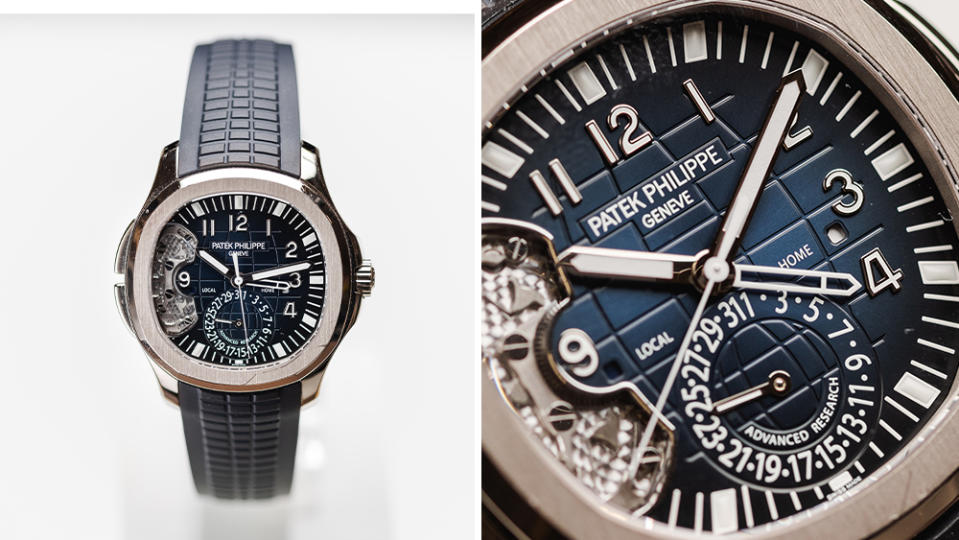
Another one to delight micro-engineering geeks, this 40.8mm piece’s accuracy-bolstering Spiromax balance spring is made of a silicon alloy called Silinvar, while what you can see through that tantalizing, C-shaped dash of open-worked theatre on the left of the dial is an adjustment mechanism made up of four crossed leaf springs with chamfered edges.
Released in 2017, the 18K white-gold watch is also water-resistant to 120 meters and equipped with the dual time-zone function Patek users will associate with the Calatrava Pilot Travel Time and Nautilus Travel Time.
Best of Robb Report
Sign up for Robb Report's Newsletter. For the latest news, follow us on Facebook, Twitter, and Instagram.

